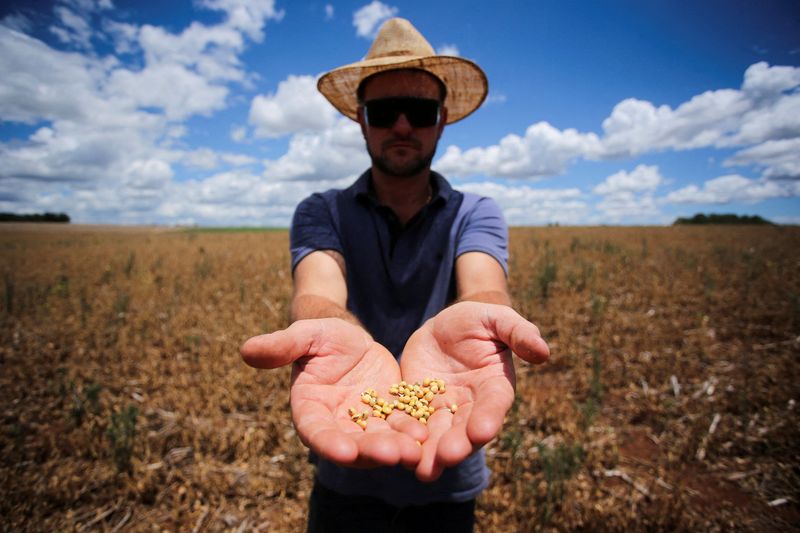By Karen Braun
FORT COLLINS, Colo. (Reuters) -A Brazilian soybean crop as large as 134 million tonnes seemed unimaginable just a couple of years ago, but that figure now represents unprecedented losses in the soybean market as it is known today.
These drought-induced harvest reductions keep this year’s global soybean carryout projection at an eight-year low relative to demand, but the blow is softened by top importer China’s diminishing needs.
The U.S. Department of Agriculture on Wednesday cut No. 1 exporter Brazil’s 2021-22 soybean crop to 134 million tonnes from 139 million in January and 144 million in December, which was the original outlook.
The 7% decline from December to February is USDA’s largest two-month cut since the 2012 crop, which also battled drought. But the global soybean market has transformed drastically since then.
The 2011-12 season was the last time the United States was the top soybean exporter, but it has increasingly been Brazil’s game ever since. Brazil’s share of world soybean exports a decade ago was 40% versus about 55% today.
Brazil’s exports have grown more than 150% in the last decade and even with the drought this year are set to outpace U.S. shipments by more than 60%. Ten-year U.S. export growth is about 50%.
Brazil’s soybean boom has been made possible by the doubling of its crop over the last decade on both area and yield expansions. Brazil’s harvest first surpassed the U.S. one in 2017-18.
USDA’s latest reductions are among many industry outlooks calling for a smaller 2022 Brazilian soybean crop, but the agency’s number is on the higher side. Some analysts have predicted a harvest up to 14% off original ideas, double the USDA’s markdown.
Historical crop estimates do not give a great indication of how much further Brazil’s soybean crop may fall because there are so few examples. The 2009 crop suffered similar losses as 2012, and final production in both years came in close to USDA’s lowest estimates of the season.
Brazil’s statistics body, CONAB, will publish fresh outlooks for the soybean crop on Thursday, but its starting point and cuts have been more conservative. The group in December saw the crop at 142.8 million tonnes but last month scaled back to 140.5 million.
USDA’s Wednesday report supported recent ideas that China’s soybean demand has slipped, and the current year import outlook was chopped to 97 million tonnes from 100 million last month, a relatively large monthly decline. That is below the year-ago 99.8 million.

Some market participants assumed Brazil’s crop losses would be reflected on the U.S. balance sheet with an export bump, which did not pan out due to China’s lower imports. But global buyers have recently been snapping up old-crop U.S. soybeans, so U.S. business could be due for a lift if Brazil’s fortunes get any worse.
Karen Braun is a market analyst for Reuters. Views expressed above are her own.